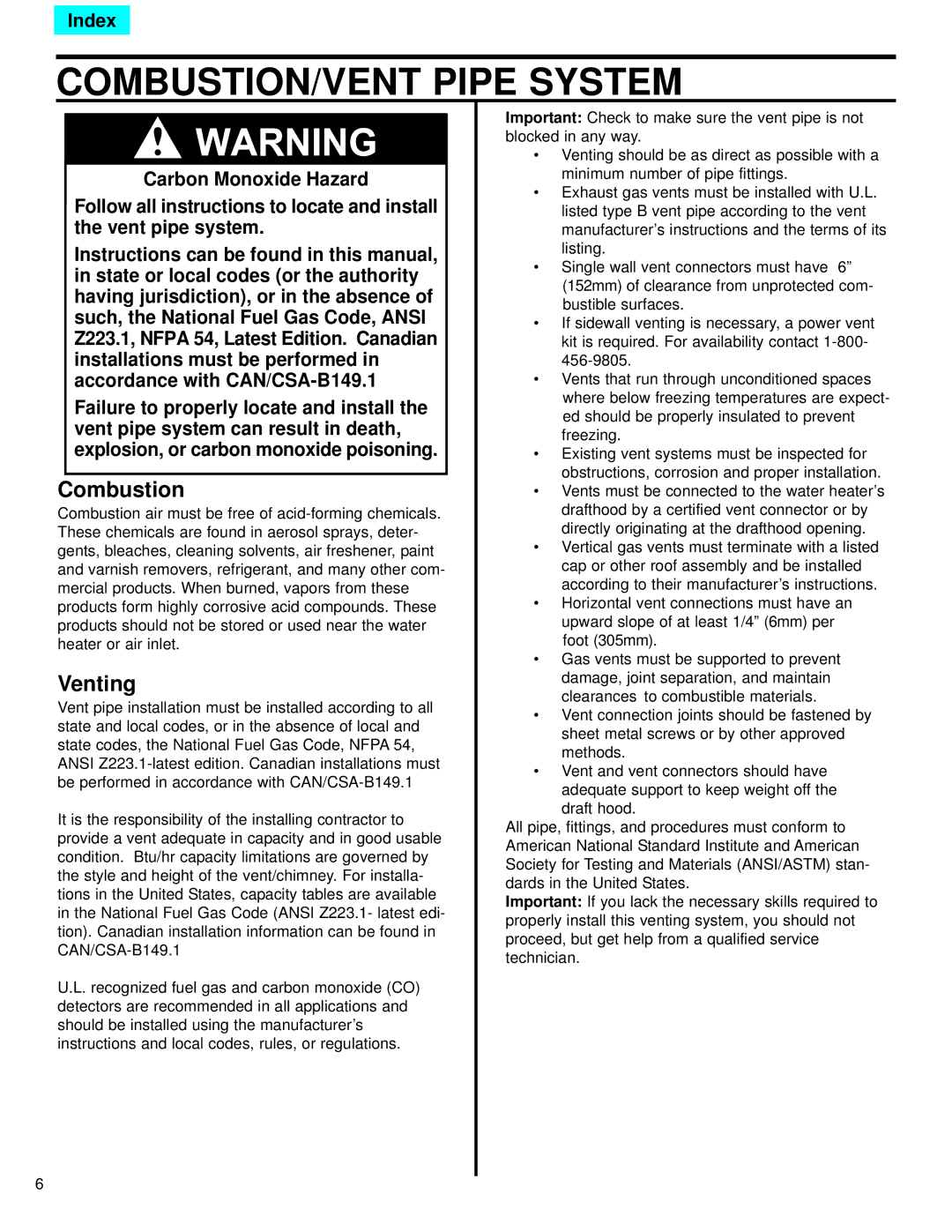
Index
COMBUSTION/VENT PIPE SYSTEM
Carbon Monoxide Hazard
Follow all instructions to locate and install the vent pipe system.
Instructions can be found in this manual, in state or local codes (or the authority having jurisdiction), or in the absence of such, the National Fuel Gas Code, ANSI Z223.1, NFPA 54, Latest Edition. Canadian installations must be performed in accordance with
Failure to properly locate and install the vent pipe system can result in death, explosion, or carbon monoxide poisoning.
Combustion
Combustion air must be free of
Venting
Vent pipe installation must be installed according to all state and local codes, or in the absence of local and state codes, the National Fuel Gas Code, NFPA 54, ANSI
It is the responsibility of the installing contractor to provide a vent adequate in capacity and in good usable condition. Btu/hr capacity limitations are governed by the style and height of the vent/chimney. For installa- tions in the United States, capacity tables are available in the National Fuel Gas Code (ANSI Z223.1- latest edi- tion). Canadian installation information can be found in
U.L. recognized fuel gas and carbon monoxide (CO) detectors are recommended in all applications and should be installed using the manufacturer’s instructions and local codes, rules, or regulations.
Important: Check to make sure the vent pipe is not blocked in any way.
•Venting should be as direct as possible with a minimum number of pipe fittings.
•Exhaust gas vents must be installed with U.L. listed type B vent pipe according to the vent manufacturer’s instructions and the terms of its listing.
•Single wall vent connectors must have 6” (152mm) of clearance from unprotected com- bustible surfaces.
•If sidewall venting is necessary, a power vent kit is required. For availability contact
•Vents that run through unconditioned spaces where below freezing temperatures are expect- ed should be properly insulated to prevent freezing.
•Existing vent systems must be inspected for obstructions, corrosion and proper installation.
•Vents must be connected to the water heater’s drafthood by a certified vent connector or by directly originating at the drafthood opening.
•Vertical gas vents must terminate with a listed cap or other roof assembly and be installed according to their manufacturer’s instructions.
•Horizontal vent connections must have an upward slope of at least 1/4” (6mm) per foot (305mm).
•Gas vents must be supported to prevent damage, joint separation, and maintain clearances to combustible materials.
•Vent connection joints should be fastened by sheet metal screws or by other approved methods.
•Vent and vent connectors should have adequate support to keep weight off the
draft hood.
All pipe, fittings, and procedures must conform to American National Standard Institute and American Society for Testing and Materials (ANSI/ASTM) stan- dards in the United States.
Important: If you lack the necessary skills required to properly install this venting system, you should not proceed, but get help from a qualified service technician.
6
